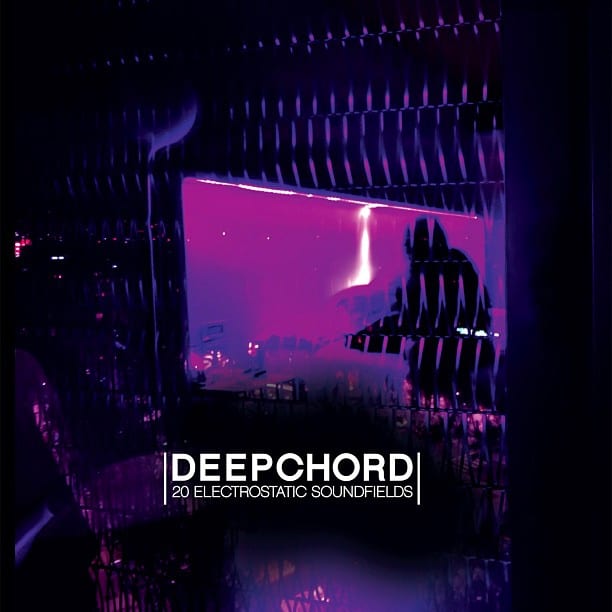
Constant Lambert described the experience of listening to the music of Erik Satie “as though we were slowly moving around a piece of sculpture and examining it from a different point of view”. The point being that the traditional concept of harmonic progression that dominates most of Western music was substituted for a different engagement with the relationship between time, space and sound. The new album from Deepchord, aka Rod Modell, requires a similarly unusual interaction from the listener. Less a sculpture, the tracks come across like a magic eye poster, vague almost formless textures that occasionally congeal into tangible structures blurring in and out of perception.
The pieces here have been collected from various video soundtrack and installation works Modell has been involved with over the last few years. Each of the twenty tracks is built around a series of short loops that merge in and out of each other in a way one could imagine going on indefinitely. Like a Charlamagne Palastine composition they engage with the listener’s perception of time. The tracks vary in length from barely a minute to up to 10 minutes but the approach is the same throughout, the minimalist repetition that is the basis of each arrangement luring the listener into hearing from different perspectives, absorbing different details and noticing new relationships between the sounds – the ‘electrostatic’ referred to in the title is a reference not only to the warm layers of crackle and hiss that smother the album, but also the music’s aversion to typical linear progressions.
The dub and techno routes of Deepchords earlier releases are still present despite the unusual arrangements. The opening track ‘Driftwood’ is built around a bed of reverb drenched synths and field recordings that almost sounds like a Basinski composition. However the warm stab of Orb like pads keeps a sense of blissful movement throughout. ‘De Wallen’ is built on a simple kick pattern that reflects the techno past of Modell’s hometown Detroit. Around it simple melodic ideas and fragmented oscillations weave in and out of each other, substituting dramatic dynamic shifts with an ever more smothering blanket of sounds. The syncopated synth bass and echoing percussion of ‘Fern’ is the most energetic point on the album, the wobbly instrumentation and ever more intense dubby groove slowly shifting from summery to sinister by its end.
The most obvious comparison to 20 Electrostatic Soundfields is Wolfgang Voigt‘s first Gas album, in that both use minimal loops and static-y production to create a form of night time music that has too much movement to just be considered ambient, but exercises enough restraint to avoid descending into standardised arrangements and structures. Deepchord’s album suffers a little because of the compilation structure of it. Some of the shorter tracks float by too quickly, not giving the listener enough time to fully absorb them, and almost descending into muzak territory. As a whole though, Modell has compiled a rich enveloping body of work that is brave in its subtlety, relying on the listener allowing themselves to be absorbed into the arrangements, rather than compromising to lure them in.